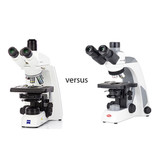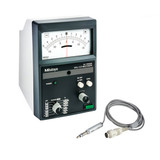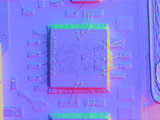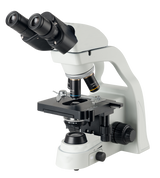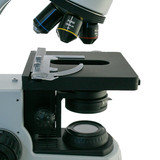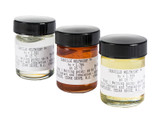How to Use Digital Calipers
Mar 9th 2025
Calipers are essential measuring tools that are widely used for their ease of use and 0.01mm precision, making them an industry standard. Digital calipers not only help prevent misreading but also serve as a key step toward loT-driven measurement data collection.
How to Use a Digital Caliper
The video below details how to properly use a digital caliper for direct measurement and comparative measur
…
A Comprehensive Guide to Confocal Microscopes
Jan 16th 2025
Confocal microscopes are essential tools in scientific research and industrial applications, offering unparalleled imaging precision and clarity. In this guide, we’ll explore what confocal microscopes are, how they work, their applications, and the different types available to suit various needs.
What is a Confocal Microscope?
A confocal microscope is an advanced optical imaging device desig
…
What Is a Digital Microscope?
Dec 19th 2024
A digital microscope is an advanced optical device that combines the traditional functionality of a microscope with modern digital imaging technology. Unlike conventional microscopes, which use eyepieces to observe specimens, a digital microscope captures images and videos of the magnified subject and displays them on a computer screen or built-in monitor. This technology not only makes viewing mo
…
Microscope Image Comparison: ZEISS Primostar versus Motic Panthera
Nov 17th 2024
Recently, we looked at images on two different microscope systems: the ZEISS Primostar 3 and the Motic Panthera. We wanted to compare the images captured with both of these microscopes.
For both microscopes, the same digital camera was used to capture the images, a 5 megapixel microscope camera (the DCM5.3). Images displayed were captured with a 100x objective lens. For the ZEISS Primostar 3, the
…
Mitutoyo Mu Checker Systems Explained
Oct 27th 2024
How does Mitutoyo's Mu checker System Work?
The Mu checker uses the following measurement principle: a differential inductance displacement sensor, which is energized by a 5 kHz AC exciting voltage, is applied across two identical coils connected in series, L1 and L2. An iron core, which is connected to the probe stylus, moves close to both coils. The impedance of each coil varies depending on it
…
Solino Anomaly Detection Images and 3D Images
Sep 30th 2024
Solino: Anomaly Detection & 3D Imaging
Opto's Solino is a vision imaging sensor that captures object anomalies and 3D images for use in quality control and assurance, automation of manufacturing processes, preventative maintenance, and inspection of fingerprints, dents, cracks, stains, etc.
Solino finds defects beyond the limits of human perception. Solino detects roughness, reflectivity
…
What is a Microscope?
Sep 17th 2024
What is a Microscope?
A microscope is an instrument used to magnify objects that can't be viewed with the naked eye or need a bit more magnification in order to see them better.
What can I view with a Light Microscope?
The image below shows a range of sizes from 1 meter to 0.1 nanometers. The human eye can view bats, bugs, and strands of hair. A light microscope helps to magnify blood cells and ba
…
How to Use Your Compound Microscope
Sep 17th 2024
A compound microscope looks something like this:
Start using your compound microscope to observe samples by following these steps. Use the above labeled microscope image if you are unsure where certain parts are located on the microscope.
Plug in your microscope (unless it is cordless), and turn on the light. Tip: Control the light intensity as needed to see your sample clearly. Start wit
…
Why Are There Several Different Types of Microscopes and Are They All Necessary?
Aug 28th 2024
Microscopes are essential tools in science and industry, providing insights into the microscopic world that are otherwise invisible to the naked eye. With various types available, it’s natural to wonder why so many exist and whether each type is truly necessary. In this post, we’ll explore the different types of microscopes, their purposes, and how to choose the right one for your need
…
Can I See Bacteria Under a Microscope?
Aug 22nd 2024
Can I See Bacteria Under the Microscope?
Bacteria can be difficult to view under the microscope but YES you can view bacteria under the microscope. Here are some tips to help view bacteria under the microscope.
Why are Bacteria Hard to View Under the Microscope?
Bacteria are Transparent. If you are viewing individual bacteria cells, they have no color. Bacteria show color when in a colony, but no
…
2D Surface Measurements and 3D Inspection
Aug 20th 2024
What is SurfaceMeasure?
The SurfaceMeasure1008S is a non-contact line-laser sensor that is used for inspection and measurement of 2D and 3D images. Using the emulator makes it possible to consider measurement conditions or make an analysis with obtained data even when offline.
High Accuracy Sensor - the sensor is guaranteed for an accuracy of 20µm and Z repeatability of 0.5µm
Environm
…
10 Types of Light Microscopes and How to Use Them
Jul 16th 2024
What is a Light Microscope?
A light microscope is a tool that enlarges and allows for the observation of tiny objects, often those that are not visible to the naked eye. It employs visible light and a series of lenses to achieve magnification and resolution. Here are the key components and features of a light microscope:
1. Illumination Source: A light source, usually a built-in lamp, provides the
…
Viscosity Tube Information
Jul 11th 2024
What is Viscosity?
Viscosity is a measurement of resistance, or internal friction, to flow by external forces. Viscosity measures a fluid's flow resistance. Viscosity describes a moving fluid's resistance. A fluid with large viscosity does not flow easily because its specific makeup gives it a lot of internal friction. A fluid with a low viscosity flows easily because its molecular makeup has litt
…
Preservative Tablet Information
Jul 1st 2024
Preservative Tablets
Microscope World carries several options for preservative tablets. Below is info on each of these preservative tablets and their specific uses.
Stabilize Urine Specimens for Delayed Lab Exam of Urine
Cargille's Cult-Ur Preservative Tablets are designed to stabilize urine samples for delayed laboratory examination of urine. Cult-Ur tablets are mercury free and are designed for
…
Microscope Slide Mounting Media
Jun 20th 2024
Microscope Slide Mounting Media
The Cargille Meltmount series consists of optical-quality thermoplastic mounting media, designed for microscope slide mounting and other optical coupling applications.Meltmount can serve as a modern alternative to traditional mounting media.
Old Mounting Media
Meltmount Equivalent
Canada Balsam
Meltmount 1.539 - optically similar to Canada Balsam with a
…




